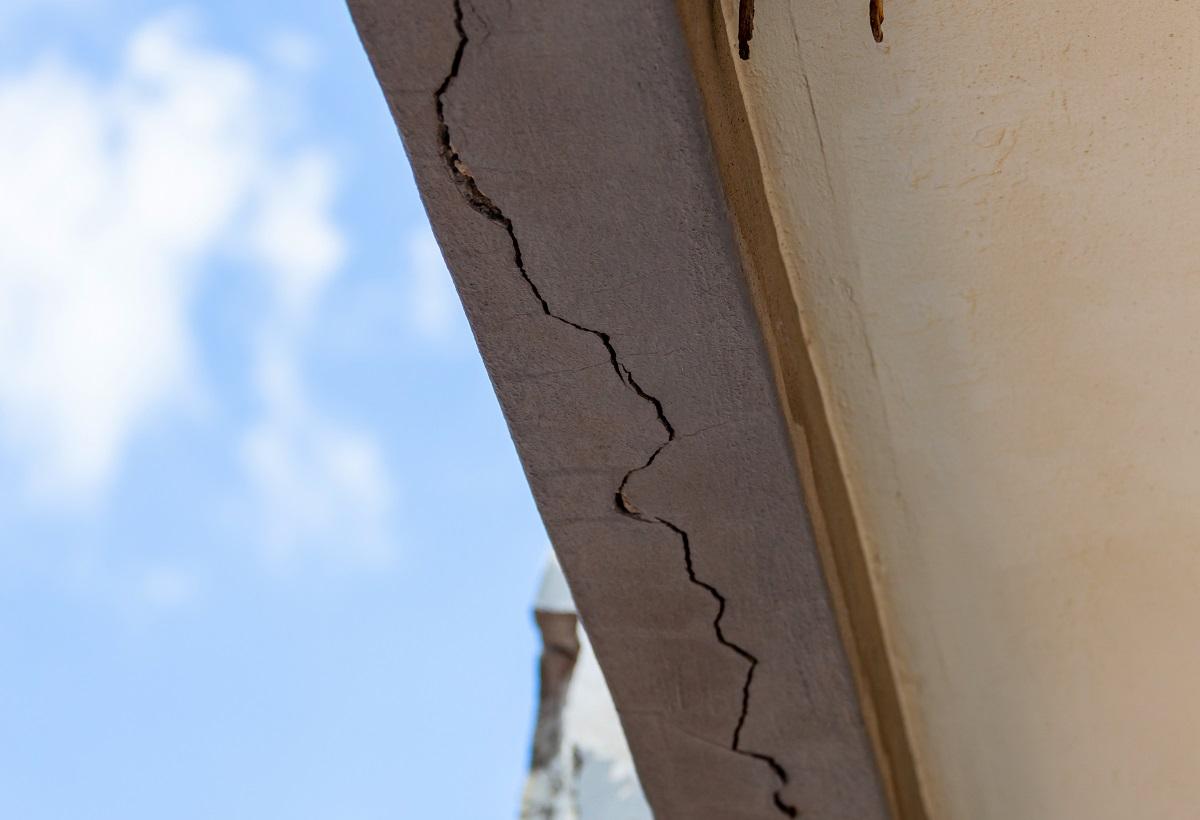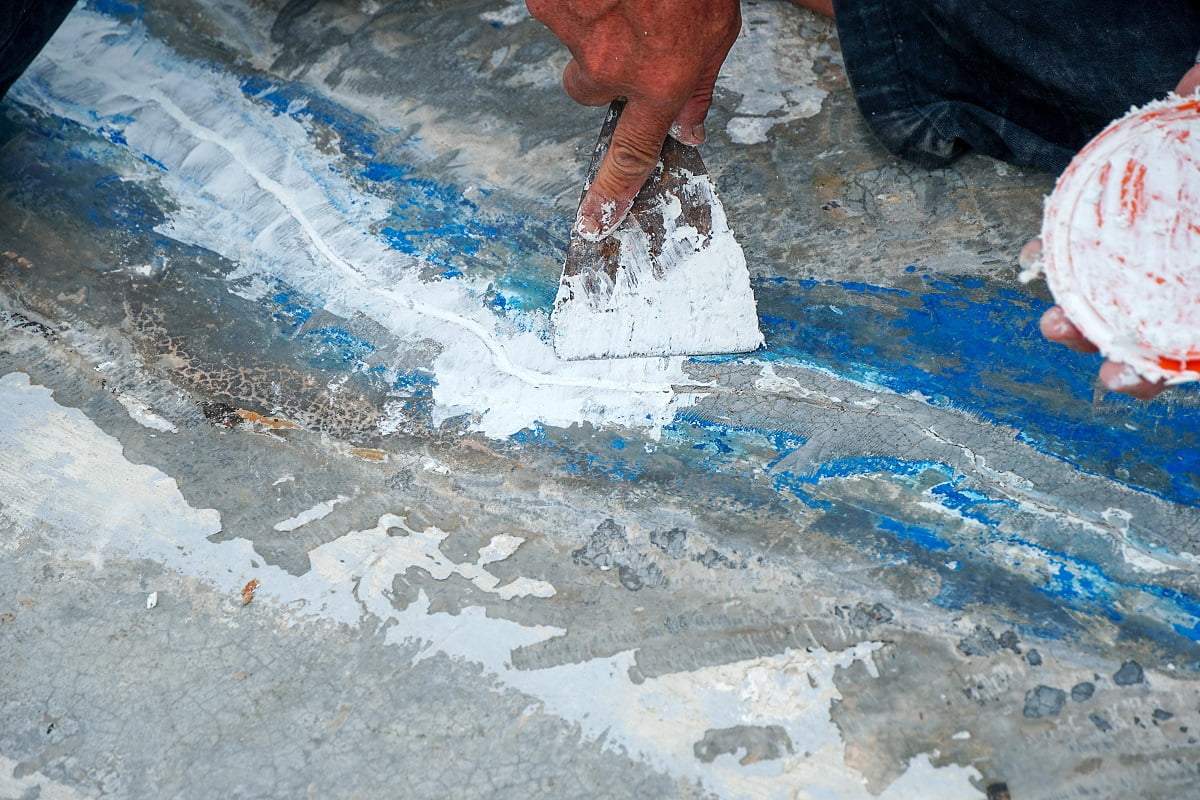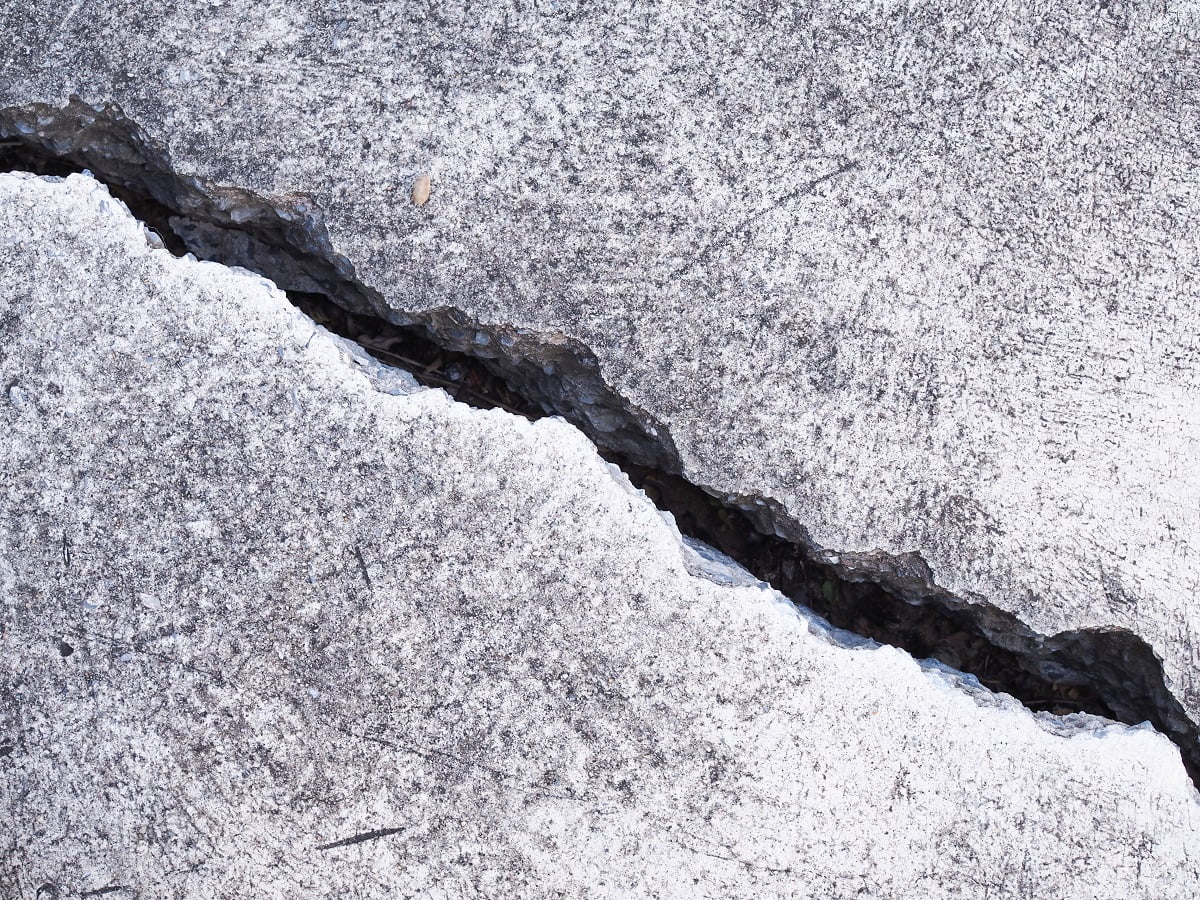Even the best concrete crack filler won't be of much help if your technique for applying it is wrong, to begin with.

Concrete is solid, but it can crack for many reasons, and if not repaired soon, the problem could take a turn for the worse. People pay too much attention to crack repair mixes that they forget to polish their technique before getting into the procedure.
Even if the task isn’t as complicated, still, you must know the right steps to get the job done successfully. So, to help you out, we have formulated this brief guide on how to repair cracks in concrete.
Checkout our previous article on ceiling textures to figure out which types of ceiling suits you best. As, ceilings are one of the first things that one can spot when entering your home or apartment.
Without further ado, let’s get started!
Concrete Cracks And Why They Occur?

Even if the concrete is strong enough, it isn't invincible, and over time, cracks, holes, or crevices will start appearing in them. If not repaired, these cracks or holes will expand further due to changing weather or other reasons, making the task complicated and expensive to handle.
Concrete combines cement, water, gravel, stones, etc., to form an impermeable hard mass. However, this hardened cemented mass can crack due to multiple reasons.
So, if you’re wondering, “Why does cement crack?” in the first place, then look at the reasons below.
1. Shrinkage
The most common reason for early concrete cracks is shrinkage. The concrete mix contains a certain amount of water before it has hardened completely. Once it hardens, the mixture shrinks as the water dries up, which makes the concrete crack. As it's rigid, shrinking puts stress on the slab, which it can't handle, resulting in cracking.
Some builders add too much water to the concrete mix during construction, and when the moisture dries up, it creates pressure on the concrete slab. The best way to avoid this is to add optimal water to the mix.
Mostly, these cracks are very narrow, just a hairline, and are barely noticeable, so they don't pose any significant problem. However, they do look unsightly if they're too prominent.
2. Expansion
Concrete slabs expand when the weather is too hot, which causes stress, ultimately leading to cracks. During this expansion process, the concrete slab tries to push against any surface hindering its path. When there's resistance against such expansion, this makes cracks appear in the slab.
But this situation can be easily remedied using compressible material in isolation joints between two concrete slabs.
3. Settling
Another reason for concrete cracking is due to "settling." If there's a tree near the concrete and it's removed for any reason, the area under the slab where tree roots were will lead to cracks.
This happens because as the tree roots decompose after the tree is removed, it leads to a void in the base of the concrete, which makes the whole slab settle.
4. Overloading
Overloading also causes concrete slabs to crack, which is quite apparent as anything that receives an excessive load than it can handle will obviously crack. The same happens with concrete. If the ground beneath the concrete receives too much pressure, the overload will result in cracks.
Now, most people are of the idea that overload pulverizes or crushes the concrete. However, it isn't so. It isn't the concrete but the ground beneath the concrete which can't handle the excessive weight. This mostly happens after the rain or snow as it softens the ground, which makes it susceptible to damage. Regardless, this isn't often, especially in residential units, as they don't usually experience that much weight.
Apart from these reasons, concrete cracks also occur due to premature drying, whereby the slab loses moisture quickly. This leads to the appearance of spider webs like cracks which are commonly known as crazing cracks. Other than this, crusting cracks are prevalent too, which occur during the stamping process.
How To Repair Cracks In Concrete?
Concrete cracks occur more frequently than you think, and repairing them on time is wise. Otherwise, small cracks will transform into bigger ones that pose a problem later.
Small cracks aren't that big a deal as you won't trip or fall due to them, but they aren't striking to look at and taint the house's appeal. So, if you want the patio or walkway to look as fine as the day the house was bought, it's better to repair any holes or crevices in the concrete.
We have mentioned the general process of repairing concrete cracks below. As a side note, you must remember that repairing cracks in a concrete surface differs from fixing cracks in a foundation wall. So, if you’ve been wondering “how to fix a crack in a foundation wall,” then know that the steps differ for that.
Step 1: Choose The Right Repair Product First
The first thing you need to do before starting the concrete crack repair work is to choose the right repair product. If you thought of repairing concrete cracks with concrete, you should know that this isn't how it goes, especially while filling narrow cracks.
Here, a ready-to-use concrete repair mix is ideal as they're easy to apply and don't require much guidance. You can use them on your own as they have easy applicator nozzles or come with caulking guns, making crack filling a piece of cake.
Some of the most commonly used ones are epoxy compounds, mortar mix, and latex patching material. Mortar mixes are perfect for ¼-inch or more significant gaps, while latex patching material, epoxy, and vinyl concrete patching compound are ideal for narrow, small cracks like hairline cracks.
Several brands of crack mixes are available in the market, and you should do thorough research before buying any.
Step 2: Prepare The Area With Concrete Crack
After choosing the suitable patching compound, the next thing you need to do is prepare the cracked area. In this step, you'll require a chisel, a small hammer, and a scrubbing wire brush with which the dislodged concrete surface will be cleaned for the final repair.
Here, you'll need to use a hammer and the masonry chisel first to open the crack further to do away with the loose or crumbling concrete. Try to chip to the base to dislodge the whole crack to ensure nothing is left loose before the final process. Once you're done opening the base of the crack, clean it thoroughly with a wire brush, and then rinse it.
Don't forget to wear protective gear like gloves or a mask as it's a dusty process.
Step 3: Repair The Cracked Area
Lastly, apply your chosen repair mix to the clean crack and let it cure. Remember to follow the instructions mentioned on the repair mix to ensure the process is successful. Once you're done mixing the patching compound, apply it with a putty knife or a mason's trowel and make sure the product penetrates the crack well. Also, level it with the surrounding concrete, so the surface is perfectly even.
Afterward, let the product sit and cure according to the manufacturer's instructions.
How To Repair Narrow Concrete Cracks?
Narrow cracks like the hairline cracks occur when the concrete slab loses moisture, which is quite common. Although they don't pose any risk and are barely noticeable at times, a timely repair should be done so that the crack doesn't widen.
Look at the steps below if you don't know how to patch a narrow crack.
Step 1: Clean the cracked area off any loose or crumbling debris with the help of a wire brush. Then, broom the area and wipe it clean with running water.
Step 2: Fill the cleaned area with a concrete crack filler. These are readily available online and come with a nozzle applicator for easy application. You can also use them with a caulking gun for precision.
Step 3: Once the crack is filled with crack filler, smoothen and even out the application with a putty knife.
Step 4: Let the filler stay and cure as per the manufacturer's instructions.
How To Repair Wide Concrete Cracks?
Wide concrete cracks can signify structural damage to the ground or walls. These cracks usually occur in our driveways and can lead to problems if not repaired on time. Therefore, they need to be filled as soon as possible to ensure they don't widen any further and pose a safety risk.
Wide cracks, i.e., ¼-inch or more, should be filled with an appropriate patching compound to ensure the problem doesn't persist. The patching compound is mixed with water and then applied with a masonry trowel to fill the cracked area.
If you don't know how to fill large concrete cracks, then the process below will help you accomplish that.
Step 1: Use a small hammer and a masonry chisel to undercut the concrete crack. Undercutting the sides of the cracked floor in the shape of an inverted "V" is ideal as the patching compound sets better into the crack that way. It creates a mechanical bond on top of a chemical bond between the concrete and the patching compound.
Step 2: Dislodge any crumbling or loose material and clean the undercutting with the help of a metal brush. Don't forget to rinse the area with running water.
Step 3: Follow the manufacturer's instructions on the patching compound of your choice and mix it well.
Step 4: Afterwards, fill the mixture of patching compounds with the help of a trowel into the crack. Pierce the trowel in the compound and let the compound penetrate the crack. Doing this will ensure the crack is filled up well and there are no air pockets.
Step 5: Level the crack up to the surrounding concrete surface to ensure there are no bumps or lows after the repair process.
Step 6: Let the filling cure as per the time mentioned on the patching material.
Step 7: Paint the surface with appropriate concrete paint after the compound has dried up.

How To Repair Cracks In Concrete Final Remarks
Repairing cracks in the concrete surface is easy if only you know the proper steps that need to be followed.
The concrete crack repair can be easily accomplished using a suitable concrete patching compound after undercutting and cleaning the crumbling or loose concrete. Once the cracked concrete is filled and leveled with the surrounding surface, let it cure and set according to the manufacturer’s instructions.
That was all about the cracked concrete repair process. We hope we were able to help you successfully carry out this job.
